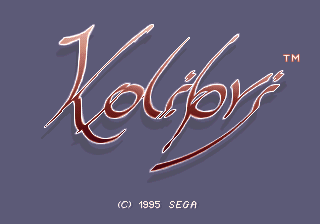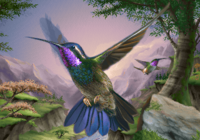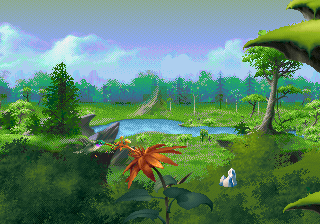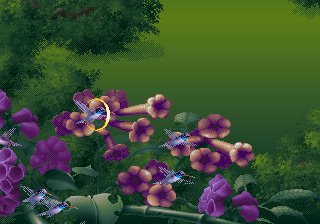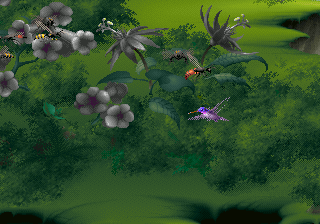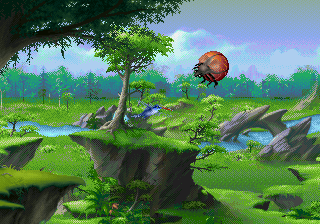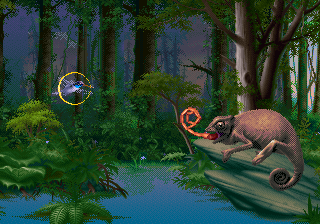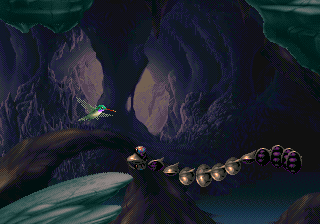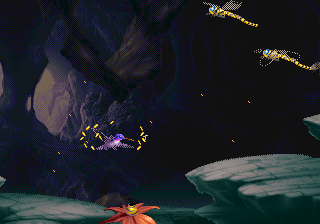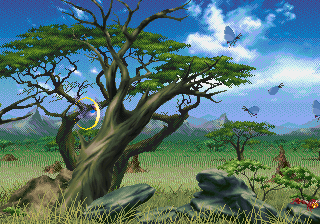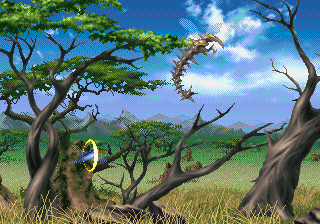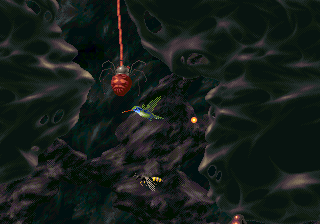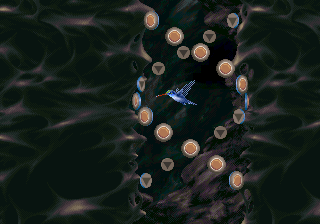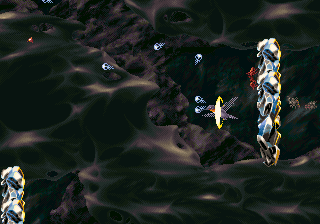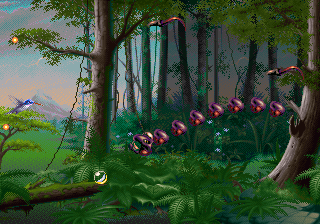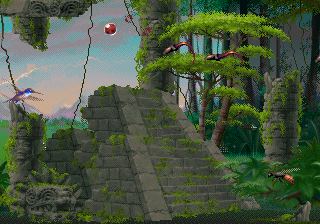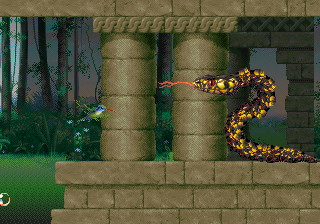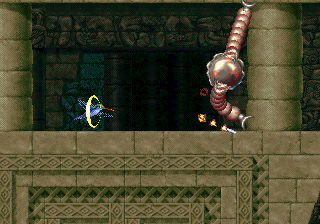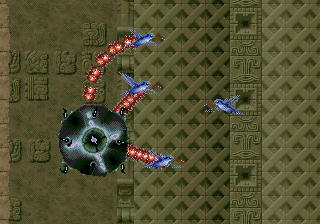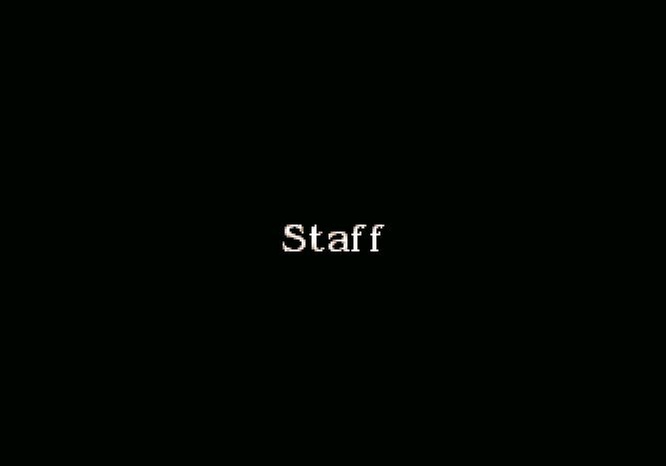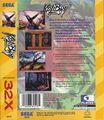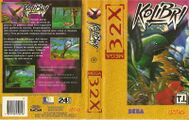Difference between revisions of "Kolibri"
From Sega Retro
m (Text replacement - "==Technical information== ===" to "==Technical information== {{mainArticle|{{PAGENAME}}/Technical information}} ===") |
|||
| Line 290: | Line 290: | ||
==Technical information== | ==Technical information== | ||
{{mainArticle|{{PAGENAME}}/Technical information}} | {{mainArticle|{{PAGENAME}}/Technical information}} | ||
| − | |||
| − | |||
| − | |||
| − | |||
==External links== | ==External links== | ||
Revision as of 14:44, 22 April 2023
| Kolibri | ||||||||||||||||||||||||||||||||||||||||
|---|---|---|---|---|---|---|---|---|---|---|---|---|---|---|---|---|---|---|---|---|---|---|---|---|---|---|---|---|---|---|---|---|---|---|---|---|---|---|---|---|
| System(s): Sega 32X | ||||||||||||||||||||||||||||||||||||||||
| Publisher: Sega | ||||||||||||||||||||||||||||||||||||||||
| Developer: Novotrade International | ||||||||||||||||||||||||||||||||||||||||
| Sound driver: GEMS (Novotrade) | ||||||||||||||||||||||||||||||||||||||||
| Genre: Shoot-'em-up | ||||||||||||||||||||||||||||||||||||||||
| Number of players: 1-2 | ||||||||||||||||||||||||||||||||||||||||
|
Kolibri is a shooter created by Ed Annunziata, developed by Novotrade, and published by Sega for the Sega 32X. It is noted for being a rather unusual shooter, as it features a realistic-looking hummingbird as its main character. "Kolibri" is the word or root word for hummingbird in several European languages.
Contents
Story
Long ago, a crystal from outer space embedded itself in the Earth and started creating life. Soon another, similar crystal crashed to Earth and started to destroy what the first crystal had created and sap away its strength. Before being destroyed, the crystal gave a lone hummingbird its power. It is up to this hummingbird to save the Earth.
Gameplay
Kolibri is a side-scrolling shooter game where the player controls a hummingbird and faces malignant insects and other creatures. Kolibri can move around in all directions with the D-Pad and shoots with ![]() , which can be held for continuous fire. By default, Kolibri maintains his direction of fire when the player moves back as long as the fire button is held; the player must stop firing to turn around. There is a setting to always fire in the direction that Kolibri is moving. Kolibri can dash in the direction of travel with
, which can be held for continuous fire. By default, Kolibri maintains his direction of fire when the player moves back as long as the fire button is held; the player must stop firing to turn around. There is a setting to always fire in the direction that Kolibri is moving. Kolibri can dash in the direction of travel with ![]() .
.
Most of the levels are free-roaming and allow Kolibri to explore in any direction. Like Ecco the Dolphin, many levels require solving puzzles to proceed. Many levels involve finding Wall Breaker Pods that allow Kolibri to break rock barriers with ![]() . Some barriers must have objects pushed through them. Other levels involve clearing all the enemies in an area before being allowed access to the next area. There are also levels that are autoscrolling like a conventional shoot-'em-up. These levels can scroll both vertically and horizontally.
. Some barriers must have objects pushed through them. Other levels involve clearing all the enemies in an area before being allowed access to the next area. There are also levels that are autoscrolling like a conventional shoot-'em-up. These levels can scroll both vertically and horizontally.
Kolibri can find Weapon Pods from destroyed enemies that change his weapon. There are several different weapons. Earth Crystals can be found in some of the levels that release Weapon Pods, allowing players to choose their preferred weapon. Kolibri's color changes depending on which weapon he has.
Kolibri starts with four hit points and loses one whenever he touches an enemy or an enemy projectile. The game has no HUD, but whenever Kolibri gains or loses health, his hit points are shown as miniature hummingbirds revolving around him. If he takes damage with no remaining hit points, he loses a life and starts over at the beginning of the level or at a Milestone checkpoint. There are numerous opponents and obstacles, such as toads, chameleons, and giant water drops, that can instantly kill Kolibri regardless of health remaining. There is no life system; player can retry levels as many times as desired. The player can find Life Pods that replenish a hit point (from destroying enemies or from feeding from pollen flowers with ![]() in the early stages) and Rings that protect Kolibri from one additional hit. Kolibri retains his hit points from level to level, but if he loses a life, he starts over with only one. The game has a password system for continuing levels at a later time.
in the early stages) and Rings that protect Kolibri from one additional hit. Kolibri retains his hit points from level to level, but if he loses a life, he starts over with only one. The game has a password system for continuing levels at a later time.
The player can choose between three difficulty levels (Easy, Normal, and Hard) and two bird speeds (Normal and Fast). There is also a cooperative two-player mode that allows two players to control two separate hummingbirds simultaneously. Both players are always on screen at the same time; the screen only moves if both players move together. One player continues to play if the other player loses a life, but the defeated hummingbird can be revived by finding a Hummingbird Pod.
Items
Stages
Production credits
- Producer: E.E. Annunziata
- Assistant Producer: John Pedigo
- Game Design: E.E. Annunziata, József Molnár
- Lead Programmer: József Molnár
- Programmers: Imre Ignácz, Attila Kristóf
- Graphic Design and Artwork: Zsolt Balogh
- Additional Artwork: Árpád Balku, András Bakai
- Music: Zsolt Dvornik
- Assistance: Attila Dobos
- Lead Tester: David Wood
- Assistant Lead Testers: Jeff Hedges, Mark Griffin, Scott Hawkins
- Testers: Crisi Albertson, Ron Allen, Joseph M. Damon, Lancelot Nelson, Maya de Campos, Lloyd Kinoshita, Atom Ellis, Stan Weaver, Amine Khoury, Aaron Reif, Ernie Deakyne, Wesley Ng, Janice Gragasin, Annette Dancel, Sándor Mezei
- Project Assistance: László Szenttornyai, Don Walters
- Special Thanks: Mihály Brudnyák, Debbie Frost, Joe Miller, András Magyari, Jason Friedman
- Thanks: Totya Dia, Andrea, Balázs Brigi, Judit, Erika, Roger Waters, Stephani, Cassie, Gerry Blau
- Developer: Novotrade International
- Marketing: Haven Carter Dubrul, Ami Blaire, France Tantiado, Earl Malit
- Manual Text and Design: Carol Ann Hanshaw
- Manual Screen Shots: Neil Hanshaw
- Manual Illustrations: Kristin J. Mallory
- Special Thanks: Chrissie Kremer
- KOLIBRI is dedicated in memory of Angela Annunziatta
Magazine articles
- Main article: Kolibri/Magazine articles.
Physical scans
| Sega Retro Average | ||||||||||||||||||||||||||||||||||||||||||||||||||||||||||||||||||||||||||||||||||||||||||||||||||||||||||||||||||
|---|---|---|---|---|---|---|---|---|---|---|---|---|---|---|---|---|---|---|---|---|---|---|---|---|---|---|---|---|---|---|---|---|---|---|---|---|---|---|---|---|---|---|---|---|---|---|---|---|---|---|---|---|---|---|---|---|---|---|---|---|---|---|---|---|---|---|---|---|---|---|---|---|---|---|---|---|---|---|---|---|---|---|---|---|---|---|---|---|---|---|---|---|---|---|---|---|---|---|---|---|---|---|---|---|---|---|---|---|---|---|---|---|---|---|
|
| 74 | |
|---|---|
| Based on 22 reviews | |
| 32X, PT |
|---|
|
Technical information
- Main article: Kolibri/Technical information.
External links
- Sega of America webpage: 32X
References
- ↑ 1.0 1.1 Game Players, "Vol. 9 No. 1 January 1996" (US; 199x-xx-xx), page 76
- ↑ 2.0 2.1 2.2 2.3 Computer & Video Games, "December 1995" (UK; 1995-11-10), page 28
- ↑ File:Kolibri 32X credits.pdf
- ↑ File:Kolibri 32x us manual.pdf, page 22
- ↑ Electronic Gaming Monthly, "November 1995" (US; 1995-xx-xx), page 46
- ↑ Fun Generation, "06/95" (DE; 1995-0x-xx), page 74
- ↑ GameFan, "Volume 3, Issue 11: November 1995" (US; 1995-xx-xx), page 22
- ↑ GamePro, "December 1995" (US; 1995-xx-xx), page 87
- ↑ Gamers, "Dezember 1995" (DE; 1995-11-08), page 67
- ↑ Game Informer, "November 1995" (US; 1995-1x-xx), page 53
- ↑ Hobby Consolas, "Diciembre 1995" (ES; 1995-xx-xx), page 118
- ↑ MAN!AC, "12/95" (DE; 1995-11-08), page 50
- ↑ Mega Force, "Mars 1996" (FR; 1996-0x-xx), page 76
- ↑ Mega Fun, "12/95" (DE; 1995-11-21), page 74
- ↑ Mean Machines Sega, "December 1995" (UK; 1995-10-30), page 81
- ↑ Next Generation, "December 1995" (US; 1995-11-21), page 190
- ↑ Player One, "Février 1996" (FR; 1996-0x-xx), page 114
- ↑ Sega Magazin, "Dezember 1995" (DE; 1995-11-15), page 10
- ↑ Sega News, "Říjen 1996" (CZ; 1996-xx-xx), page 22
- ↑ Sega Power, "January 1996" (UK; 1995-11-16), page 66
- ↑ Sega Pro, "December 1995" (UK; 1995-11-02), page 44
- ↑ Sega Saturn Magazine, "December 1995" (UK; 1995-11-24), page 90
- ↑ Todo Sega, "Enero 1996" (ES; 199x-xx-xx), page 34
- ↑ Ultimate Gamer, "December 1995" (US; 1995-1x-xx), page 91
| Kolibri | |
|---|---|
|
Main page | Hidden content | Magazine articles | Reception | Region coding | Technical information | |
